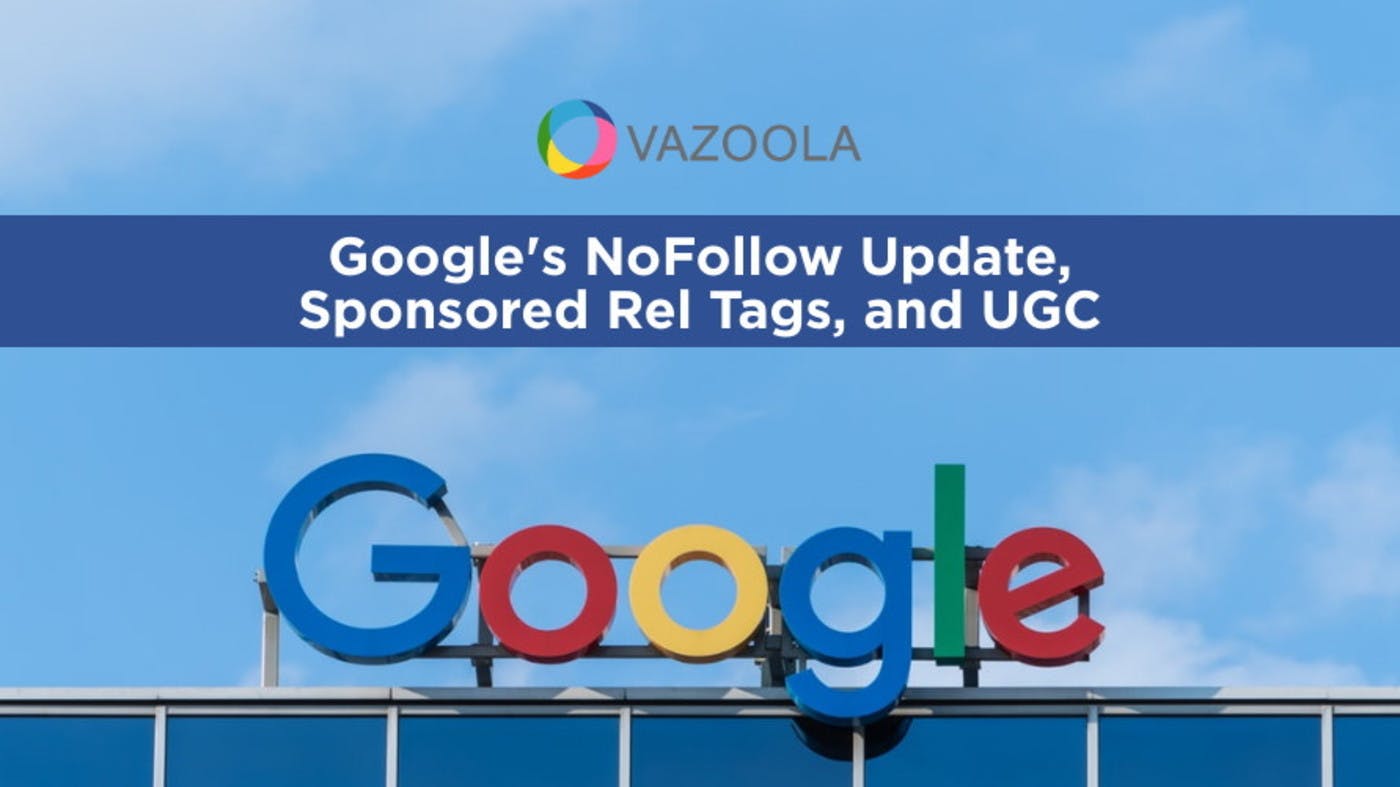What You Need to Know About Google's NoFollow Update, Sponsored Rel Tags, and UGC
Oct 21, 2019
Written by Casey Bjorkdahl

Casey Bjorkdahl is one of the pioneering thought leaders in the SEO community. In 2010, Casey co-founded Vazoola after working for a Digital Marketing Agency for five years in New York City. Vazoola is now one of the fastest growing and most widely recognized SEO marketing firms in the country.

When Google first added NoFollow links 14 years ago, it was impossible to predict that their presence would be one of the most stable elements of SEO.
In an industry that is defined by responsiveness to changes in search algorithms, anything that stays the same for nearly a decade and a half is remarkable.
That also makes it remarkable when they change things. Google’s new policy preserves the NoFollow function but expands it to differentiate between uses with additional tags:
- Sponsored Rel (paid for or sponsored)
- UGC (user generated content)
- NoFollow (not new) just tells Google not to give any credit to the link
This is a significant change from the previous policy, which had a single, uniform tag SEO professionals used when it came to NoFollow, Sponsored, and UGC tagging.
The algorithm did not need to differentiate. This was consistent with Google’s stated policy of not considering those NoFollow tags in rankings.
There are other changes, though. While the company still maintains it is a general policy not to consider them in rankings, the new NoFollow tag policy for the differentiated tags includes a statement that the tags may be used as hints.
This makes one wonder what exceptions the policy is anticipating allowing to influence results, even if only as hints.
Additionally, after March 1, 2020, the crawling and indexing bots will also follow the same policy, treating these tags as hints.
What Do These Changes Mean?
The introduction of the new tags introduces several categories that differentiate the reasons for setting up a NoFollow link.
On its own, that is a positive change that makes it a lot easier to set up link codes that are easier for the search engine to differentiate by purpose.
In the end, this could lead to a much more responsive, context-dependent ranking system. Companies that have worked hard to create content that serves an audience can benefit from this change.
But it also means growing pains as businesses deal with rapid shifts to their search ranking.
Google has required the NoFollow attribute for sponsored links since they were introduced in 2005. In addition to marking paid links for the search engine's discretion, the attribute created an easy way for publishers to control the quality of the links, since linking to shady sites in UGC could hurt a page's overall ranking.
It was a positive change for the web when it happened because it cut through a lot of chaos caused by operators taking advantage of the loophole afforded UGC before the change.
The new tags represent a step toward further differentiating paid links from user-generated content.
Prior to these changes, Google insisted that NoFollow links were not used for ranking, and the crawling and indexing services ignored them completely.
Google has acknowledged that by ignoring these links, it has significantly limited their ability to collect and evaluate important linking information. Now, they will officially be recognized as hints.
It seems that after 14 years, Google is willing to officially acknowledge that NoFollow's use for ranking needs to be context dependent.
If they have been doing this in some cases already, the impact on rankings could be negligible. It will be tough to know until all the changes take effect and have time to propagate.
Do I Need to Make Changes to Old Pages?
Thankfully, no. Google has not given publishers any reason to update. There's no benefit, and that at least, means this won't be a labor-intensive change.
Differentiating between links going forward will be essential if the search giant is serious about using context-dependent screening to determine when these links should count toward ranking and by how much.
That's because they seem to be setting themselves up to rank UGC and sponsored links differently and to balance the way they are interpreted into ranking results against other factors.
Why Make These Changes?
After the introduction of the NoFollow attribute, there was a bit of a backlash. Since sponsored links had to carry the attribute to avoid penalizing the page's search results, many sites applied them to every link on a page.
Major sites like Forbes were making it impossible for the source links in their own articles to count, while also blocking useful on-topic links to content and commentary relevant to those pages.
It appears that the current policy change is intended to differentiate the tags enough to sort those sponsored tags while creating an environment that does not incentivize the blanket use of the attribute.
Since links from high-quality content like media coverage are supposed to help a page's ranking and credibility, ending the blanket use of the tag is essential.
Moving forward, the new tags should not be hard to implement, and for end-users, they all function the way NoFollow has always functioned. That should make it easier to smooth over the changes.

